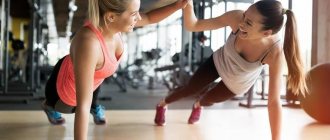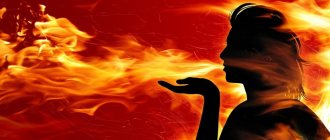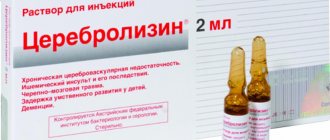Diseases of the cardiovascular system, diabetes, musculoskeletal disorders, pregnancy are the main conditions in which people try to remain calm and limit activity. But is this necessary? When you really can’t exercise, and when physical education and fitness classes allow you to recover faster - the doctors themselves told us at the “In Safe Hands” clinic.
Diabetes
At all stages of human existence, movement and physical activity have been an integral part of people's lives. The modern way of life has brought its negative fruits. The more comfort in the outside world, the less natural physical activity. This led to the emergence of the so-called “diseases of civilization” - diabetes mellitus, angina pectoris, atherosclerosis, obesity (the most common cause of type 2 diabetes mellitus). The number of patients with diabetes is highest in industrialized countries, meaning there is a direct relationship between decreased levels of physical activity and diabetes. Japanese researchers have concluded that among people who own a car, the incidence of type 2 diabetes is higher than among those who walk.
Recent studies by American diabetologists show that patients with diabetes who regularly exercise have a more favorable prognosis for the development of complications: retinopathy, nephropathy, neuropathy. If complications already exist, then with regular exercise they develop much more slowly.
With regular physical activity, the breakdown of fats increases, body weight decreases, and the fat composition of the blood improves. This eliminates the prerequisites for the development of atherosclerosis and other vascular diseases.
Physical activity also has a significant impact on carbohydrate metabolism. During intense physical activity, the sensitivity of insulin receptors to insulin increases, which leads to a decrease in blood sugar. This mechanism operates not only during physical activity, but is also strengthened during regular physical education and sports, which allows for better control of diabetes.
What is the most optimal way to distribute physical activity throughout the day? It is best to do gymnastics in the morning, and strength exercises are recommended to be left for 16-18 hours of the day.
Given that many patients with type 2 diabetes have comorbidities, not everyone is eligible for intense physical activity.
But there are a number of general recommendations that will suit everyone:
• The most suitable types of physical activity are walking, swimming and cycling . For those who are just starting to exercise, the duration of exercise should increase gradually from 10 minutes to 45-60 minutes per day.
• Regularity and consistency of physical activity is important . They should be at least 3 times a week.
• Monitoring blood glucose and your own well-being is necessary . If blood sugar is below 4.0 mmol/l or above 15 mmol/l, then exercise should be postponed until glucose normalizes.
Diabetes is a significant risk factor for cardiovascular disease, and lack of physical activity further increases the risk of complications. Exercising regularly will help improve your glucose levels and reduce your risk of heart disease at the same time.
So, stop thinking of exercise as less effective in preventing and treating type 2 diabetes than diet or medication. Physical activity is truly one of the best “medicines” you can find!
Physical activity for VSD
Vegetative-vascular dystonia and sports are completely compatible concepts, although it is still not advisable to engage in some sports. Doctors are also wary of recommendations to continue professional sports training with VSD. But moderate physical activity is even welcome, because it increases the effectiveness of therapy. Let's take a closer look at which sports are not dangerous for VSD, and which sports activities should be continued with caution.
- Allowed
With VSD, running, swimming, step aerobics, morning exercises, yoga, and badminton are among the sports that are allowed.
- Forbidden
Martial arts, weightlifting, powerlifting, arm wrestling, kettlebell lifting, bodybuilding, discus throwing are on the black list for the diagnosis of VSD.
Chess is also prohibited for people with VSD. The whole point here is not physical, but emotional stress. In addition, a chess player can sit in one position for hours. A surge of emotions against the background of a lack of muscle load can lead to a hypertensive crisis during VSD.
If you have vascular dystonia and you are going to the gym, here is what you need to remember. The entire lifestyle is of great importance: with VSD, you need a correct daily routine, including at least seven hours of sleep and good nutrition. At the same time, there is no overload on the body. Moreover, it is necessary to forget about overloads during training. When playing sports, it is important not to forget about your pulse and blood pressure. However, do not control them manically, otherwise you will develop neurosis and the effect of the stress will decrease.
Best Sports Workouts
Let's take a closer look at what sports are recommended for VSD.
The best form of physical activity for VSD is running. It uses more than 80% of the muscles, the whole body works. All its systems and internal organs are better supplied with oxygen. If you approach the process correctly, think through a plan for regular training to run, gradually increasing the load, you can easily reduce the symptoms of VSD.
This is because with a gradual increase in loads, the heart muscle will slowly learn to pump a larger volume of blood. The functioning of the brain will also improve, which will begin to receive more oxygen, thought processes will accelerate, and the consequences of neurosis, psychosis and depression will go away. All this will help you more easily survive stress during VSD. With all its advantages, running has one more huge advantage - it is the most accessible sport and in order to practice it, you do not need subscriptions to expensive gyms or expensive equipment. All you need is sneakers and a desire to play sports.
Fitness is an effective way to maintain good physical shape. It represents a set of measures that will help strengthen all muscle groups, the immune and cardiovascular systems, lose weight, and maintain tone. With the help of fitness, you will become more resilient, strong and flexible, rejuvenate your body, and forget about stress and irritability. With the help of fitness, you can also reduce the symptoms of VSD.
Horseback riding, cycling and skiing
Equestrian sports and cycling also have no restrictions in the presence of VSD. But we must remember about the smoothness of movements. In winter, swap your horse or bicycle for skis or skates.
The autonomic system is part of the central nervous system and is responsible for the functionality of all internal organs and their interaction within the system. She is responsible for the following functions:
- ensuring the interaction of reflexes and brain signals;
- perception of the environment, relaxation or tension depending on the factors affecting the psyche;
- the first solution is to activate the parasympathetic department of the autonomic nervous system: nutrition, rest, sleep;
- the second is the sympathetic department: defense and attack of the body.
The ANS consists of two departments, each of which is responsible for its own functions. One allows the body to relax, the other allows the body to tense up.
VSD and charging
To prepare the body of a patient with dystonia for regular heavy exercise, it is necessary to simply do exercises at home for the first month. Just 15–20 minutes daily will give positive results within a month. For hypothalamic dysfunction, it is recommended to perform the following set of exercises:
- Side bends from a standing position. Help strengthen the oblique abdominal muscles and increase blood flow.
- Abdominal exercises from a lying position. Strengthens the spine and abdominal muscles.
- Stand in side and horizontal plank for 1 minute.
- Exercise "bicycle". Increases vascular tone in the legs and improves venous blood flow from the lower extremities to the heart.
- Stretching exercises.
- Lifting dumbbells with your hands.
- Pushups.
A competent approach to organizing physical activity for patients with dystonia is a direct path to improving overall well-being. Along with physical hardening comes optimism and self-confidence.
Sports against the backdrop of VSD
VSD refers to pathological signs associated with impaired functioning of autonomic reactions. Their list can be very extensive. We list the most common ones found in the clinic:
- headache;
- fluctuations in blood pressure and temperature;
- emotional lability;
- excessive sweating (hyperhidrosis);
- periodic and reversible sensitivity disorders (paresthesia);
- chilliness, or periodic feeling of heat;
- redness or paleness of the skin;
- panic attacks, or “vegetative storms”, which are accompanied by the fear of death.
Sport with such symptoms is a controversial issue.
Some doctors try to convince patients that physical activity is undesirable for them and can aggravate the condition.
But there are exercises to normalize the functioning of blood vessels. Therefore, VSD and sport are often interconnected. And in the end, life is movement. And for functional disorders, it is quite possible to choose the right exercises that will not cause unpleasant symptoms.
Recommended types of exercise
When making a diagnosis related to dysfunction of the autonomic system, you need to start every day with physical activity. Immediately after waking up, you need to perform several correctly selected exercises aimed at:
- to strengthen the heart and blood vessels;
- to work with breathing;
- to develop coordination;
- to improve muscle stretching.
Each exercise must be performed slowly, without unnecessary effort, trying to feel muscle pleasure. For concomitant diseases, a set of exercises is selected taking into account not to cause harm. If you have symptoms of cardiovascular diseases such as high or low blood pressure, you must exclude:
- sudden movements;
- increased cardio loads that make you short of breath;
- jumping and shaking, etc.
General recommendations
If the vegetative-vascular system is disordered, you can choose different sports, with the exception of those that cause a heartbeat above normal, shocks and concussions. This could be: Nordic walking, swimming, gentle jogging, cross-country skiing. Training should be regular and moderate. But with VSD, physical therapy (physical therapy) must be included in the adaptation course. The advantages of this type of physical activity are that they:
- performed from a standing or lying position;
- aimed at all muscle groups;
- train breathing and develop coordination and flexibility.
Physical therapy for VSD should be performed regularly. It is better to exercise in the morning, an hour after a light breakfast, an hour before a second breakfast or snack. Exercises should be selected in such a way that strength loads, stretching and relaxation movements alternate. They should be performed slowly, until you feel slightly tired, excluding overwork.
For those who have a diagnosis of VSD, moderate and quiet exercise in the gym is useful, but only in cases where there is a tendency to hypotension: if you have high blood pressure, you cannot exercise on exercise machines.
When putting together a complex using simulators, you must definitely select exercises to improve or correct your posture. Most often, VSD develops in people with poorly developed back muscles. The condition of the spine causes incorrect position of the internal organs, their normal blood supply and function deteriorate. All this aggravates the condition of the patient, who definitely needs to strengthen his back.
Swimming with VSD
Swimming for vegetative-vascular disorders is necessary. This is one of the most gentle and at the same time effective sports. The main goal of water exercises is to develop general endurance and at the same time normalize the functioning of the central nervous system. Calm swimming, without racing for distance and speed, will bring benefits.
Compliance with the contraindications noted by experts for people with VSD can significantly improve the quality of life of the latter and save them from exacerbations of the negative symptoms of this disease.
Main symptoms and signs
The manifestations of VSD are diverse; the general list includes over several dozen items, but patients experience only a few of them (usually from 5 to 20) in different combinations. An important point: with VSD, there is a combination of several symptoms that appear simultaneously, but in the complete absence of organic disorders. A separate manifestation of any of these signs is not a reason for diagnosing vegetative-vascular dystonia, since it usually indicates a specific pathology.
Doctors distinguish several forms of VSD, classifying them on the basis of identifying relatively typical sets of symptoms that resemble the course of certain pathologies of organs or systems.
Respiratory form of VSD
Respiratory vegetative-vascular dystonia is the most common. The patient complains of the inability to take a deep breath, is afraid of suffocating, gasps for air, feels soreness, tightness in the throat, heaviness or pain in the chest, and coughs frequently.
Tachycardial form
Complaints of rapid heartbeat (tachycardia), irregular heart rhythm, sensation of vascular pulsation and heat in the temples and neck. It should not be confused with a similar picture with arrhythmia, paroxysmal tachycardia.
Cardiological form
In the area of the heart, pain of a different nature is noted (long-term aching or sharp, sharp), without a clear localization. During an attack of cardiac vegetative-vascular dystonia, the patient is anxious and breathes heavily. The pain lasts longer than with cardiovascular diseases (angina pectoris, myocardial infarction), does not depend on physical activity and is not relieved by appropriate medications (validol, nitroglycerin and others).
Hypotonic form
Characterized by dizziness, darkening of the eyes, sudden perspiration on the forehead, sweating, weakness, cold palms. Blood pressure drops briefly to 90/60 or below.
Hypertensive form
During an attack, tachycardia and heart pain are observed against the background of a short-term increase in blood pressure. The main difference from real hypertension: the pressure does not exceed 150/90.
Asthenic form
Performance decreases, complaints of fatigue, weakness, inability to concentrate, and sometimes body temperature rises slightly. Tremor (shaking in the hands) is possible, especially with the slightest physical exertion or a stressful situation. Irritability for no apparent reason or due to insignificant reasons, tearfulness.
Visceral form
Manifested by symptoms from the gastrointestinal tract (functioning disorder, nausea, diarrhea, vomiting, irritable bowel syndrome).
Mixed form
It combines certain signs characteristic of all the above forms of VSD, in arbitrary combinations.
Sometimes patients experience acute manifestations of symptoms, so-called attacks of dystonia or vegetative crises. An attack of VSD is characterized by sudden, spontaneous and rapid development, regardless of the circumstances. It can happen both during physical activity or a stressful situation, and at rest or sleep; alone or in a crowded place. Patients are afraid of suffocation, fear of death from respiratory or cardiac arrest, some feel feverish, others feel cold.
Separately, it is worth mentioning pre-syncope and fainting. They can have different origins; based on trigger mechanisms, they are distinguished:
- psycho-emotional - as a result of experiences, fear, reaction to the sight of blood;
- orthostatic - due to a sudden change in position, usually when abruptly getting up from a chair or bed;
- hypotonic – due to a sharp decrease in blood pressure.
Loss of consciousness is usually short-lived, lasting 1-3 minutes, the patient quickly comes to his senses. A history of fainting may indicate more severe pathologies, such as adrenal or cardiovascular insufficiency, nephropathy, or diabetes mellitus.
With such an impressive range of complaints, patients often do not experience any pathological changes in the structure or functioning of organs and systems. They often experience fear of developing a serious pathology, attributing to themselves some kind of disease based on similar signs. So, some fear paralysis due to mild numbness of the limbs or a heart attack due to chest pain.
Do you have symptoms of vegetative-vascular dystonia (VSD)?
Only a doctor can accurately diagnose the disease. Don't delay your consultation - call
Fitness for hypertensive type of VSD
This type of VSD is characterized by excessive vascular tone and high blood pressure (more than 140/90 mm Hg). If this condition is not controlled, it can develop into hypertension. A person is worried about fatigue, headaches and palpitations. In contrast to ordinary hypertension, numerous signs of vascular disorders appear: redness of the face and neck, “marbled” coloring of the skin, coldness in the legs and arms.
“For this type of VSD, breathing exercises, meditation, stretching are great - anything that promotes relaxation,” says Anastasia Yurkova. And to strengthen muscles and form correct movements - Pilates. For cardio, I would recommend walking in the park, swimming, cycling.”
Most trainers recommend completely abandoning strength and interval training. An exception can only be made by those who are already accustomed to such fitness. But they should also reduce the load by 30% and constantly monitor their pulse and blood pressure. Even with a slight deterioration in well-being (pressure and pulse increase after training and at rest), this type of training should be canceled, replacing it with a gentle one - the already mentioned Pilates, tai chi, yoga, walking.
Indications for treatment
The main indication is a clinically confirmed diagnosis of vegetative-vascular dystonia. Since VSD is a syndrome, the indications for its therapy correspond to disorders of various etiologies: vascular, psychological, neurological, cardiological and many others.
If your professional responsibilities involve high mental and emotional stress, stressful situations, overwork, or if you have a hereditary predisposition to VSD, sign up for a consultation with a specialist. Timely prevention will help avoid worsening problems, because the disease is easier to prevent than to treat.
What benefits does sport have for VSD?
Specialists from medical institutions and distinguished professors disagree about playing sports with VSD. Regular sports activities before the onset of symptoms made it possible to maintain and maintain a figure in ideal shape. Symptoms of dizziness, fainting, trembling throughout the body are not a reason to refuse exercise. Sports for VSD are recommended by the best specialists and doctors. However, training should be moderate, regular and comfortable. Lack of exercise with symptoms of VSD only aggravates the situation and worsens your well-being. Sport improves muscle tone and normalizes blood circulation. There are certain sports that are recommended to be performed.
Fitness for hypotonic type of VSD
With this type of VSD, vascular tone is reduced, and accordingly, symptoms of vascular insufficiency predominate. Pressure 100/60 mm Hg. Art. and below provokes weakness, pallor, a feeling of lack of air, rapid breathing and yawning. Fog in the eyes, dizziness and even fainting are possible when moving from a horizontal to a vertical position. Also characteristic are redness or cyanosis of the face and neck, “marbled” coloring of the skin, and an unreasonable drop or rise in temperature. “Light cardio is recommended for such people,” says Anastasia Yurkova. This could be a walk, swimming and, of course, yoga, which will help strengthen muscles and work with breathing.”
If you are used to fitness, try training according to your usual pattern, but reducing the load by 25-30%. Definitely avoid exercises that involve sudden changes in body position (jumping, burpees, exercise on a high step platform) and those where the head drops below chest level (bending over, deadlifts, etc.). Also avoid lifting your legs while lying down (to pump up your abs, use an incline bench on which you lie with your feet down). Even if these exercises are included in a generally gentle lesson (Pilates, fitball class), ask the instructor to give you a safe analogue.
[new-page]
Does the treatment of VSD differ for different symptoms?
For severe headaches, abdominal cramps and body aches, it is advisable to take an anti-inflammatory drug or analgesic. The choice of medication will depend on what exactly helps you in such situations.
If you experience frequent dizziness and general weakness, your doctor may recommend drinking 1-2 cups of coffee daily, or taking caffeine tablets.
Soothing and daily walks help to cope with insomnia, anxiety, and palpitations.
In case of pressure changes, paresthesia, loss of consciousness, a comprehensive examination and individual selection of medications that will relieve symptoms are required.
But the key to treating autonomic dysfunction with any set of symptoms will be regular intake of amino acids, which gradually normalize metabolism at the cellular level: glutamic acid, glycine and cystine. Therefore, for dystonia, Eltacin®, a drug with these amino acids, is needed as the main treatment. It helps eliminate the cause of dysregulation, and you will gradually forget about unpleasant symptoms.
Painkillers, heart medications, medications for high blood pressure, and sedatives do not solve the problem of VSD. Autonomic dysfunction with symptomatic treatment will not go away on its own, and over time it will become more pronounced. Dysregulated regulation reduces the body's ability to adapt to any stress, and can become the basis for the development of organic changes and diseases.









